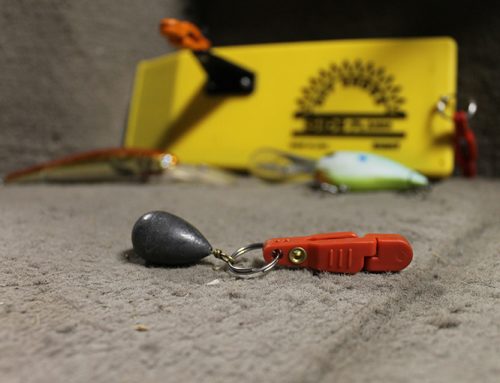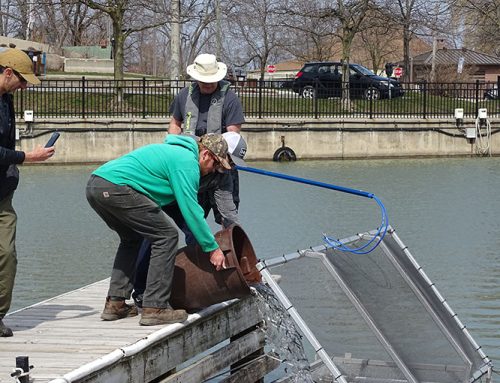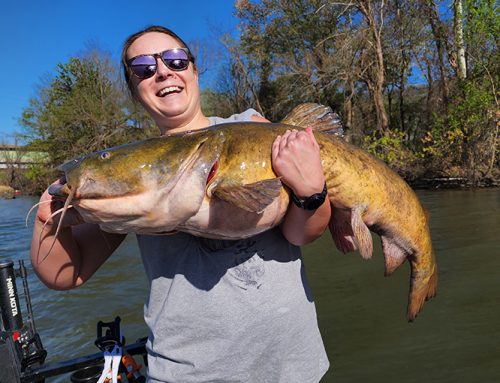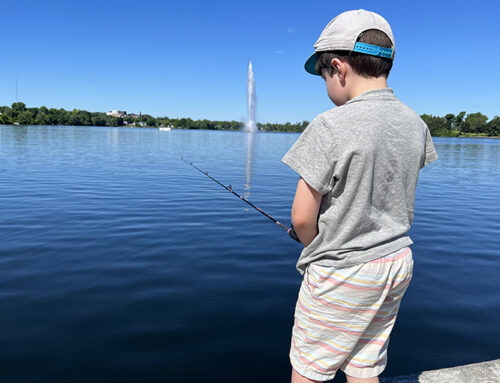
As a child, I was consumed by fishing and absorbed everything I could from any fishing magazine I could get my hands on.
My grandpa had a nice selection of 1980s and 90s magazines that I read many times. When I was eight, nine, and 10, I even used to go knocking on doors in our neighbourhood asking for fishing magazines. I’m sure many people thought I was weird, but I grew my collection.
Reading them, I found it odd to see perch-fishing stories. Growing up around Lake of the Woods — which I still call home — I saw many perch sacrificed to the fox that hung around the ice fishing spot or the eagle sitting in the white pine near dad’s favourite walleye hole. You wouldn’t be caught dead with a perch in your bucket or on your stringer. It was walleye country, so that’s what folks ate.
The perception was that perch were wormy, soft fleshed, and simply no good to eat. So, when I saw people writing about perch fishing and holding up stringers full of them, I thought maybe they just didn’t have a good place to fish other species.
As I grew older and started working as a fishing guide at resorts across northwest Ontario, I noticed that the experienced guides I emulated were bringing perch in to shore for lunch, to eat with walleye. As I watched closely, these guides were saving the perch fillets to cook last, so they could eat them. That’s what first got me thinking these fish deserved a better reputation.
Perch fishing in northwest Ontario
My long-time fishing buddy Dave Bennett also grew up on the shores of Lake of the Woods and was probably the first of my friends I saw keeping perch while walleye fishing. At first, I can remember giving him a chirp or two about keeping “the wormy perch” but it didn’t take me long to lose that attitude for good. A couple of Friday night fish fries showed me that thin perch fillets cooked fast and the slightly firmer flesh was very nice. They were indeed good to eat.
Bennett is a full-time guide on Lake of the Woods (davebennettoutdoors.com) and while most of his efforts focus on muskie and walleye, he knows where to find perch year-round.
“Lake of the Woods is obviously a big body of water, but throughout the different sections of the lake that I fish the one thing that remains consistent with finding perch is they like to school over mud or sand bottom areas,” he said. “We catch them on top of structure like humps and points as well when we’re walleye fishing, but the big groups will be over the mud.”
The same areas are often good throughout the summer, fall, and winter, he explained.
“I think that perch like to be near traditional walleye structure, but they’ll hang just off of these places over the softer bottom. I think they find more of the invertebrates and bugs that they like to eat in these areas and maybe the bigger predator fish push them off the structure.”
Getting bigger
Growing up, most of my perch catches were incidental while walleye fishing, but in the past decade, perch in my home water have become bigger and more abundant. Better electronics are most certainly helping us find more groups of perch that were missed in the past. I’m constantly watching side-imaging and down-imaging on the sonar units at the console on my boat. When I see a school of perch, I’ll often drop a waypoint. Fish aren’t glued to a piece of structure, so they will move around from day to day. Once you find a good flat they like, however, it’s often good on return visits. Sometimes you just have to spend a few minutes idling around when you pull up to a new spot to find where the group is located before you start actually fishing.
One size doesn’t fit all when it comes to the best depths to find perch. Electronics help anglers find schools. I like to focus my efforts between 15 and 25 feet in open water, while sliding slightly deeper in the fall and winter, all the way to 35 feet. These rules can be applied to most waters across northwestern Ontario with strong perch populations.
Baits that deliver
On most days, perch are aggressive. The biggest ones will often bite first when you drop your bait into a school. I like to use baits that will get their attention and select for bigger fish. That might mean using a slightly larger swimbait, in the 2.5-inch range, to cast at groups of fish you find on flats or it could mean using a 1⁄4 oz spoon on the ice, a bait size common amongst walleye anglers.
My experience is that when you get around a school of perch, a bigger bait will catch bigger fish. That’s not to say there isn’t a time and place for finesse baits, if you’re faced with heavy fishing pressure or inconsistent weather, always let the fish tell you what they want. Light line is going to allow your baits to get down to the fish quicker and gives your baits a more natural presentation. I use a braided main line on all my spinning reels, then attach an approximately eight-foot fluorocarbon leader in four or six-pound test. This gives me an invisible link to the bait, but the braid allows me to feel exactly what is going on with my bait at all times and not miss any subtle bites.
Southern Ontario
OOD contributor Tim Allard is a multi-species expert who spends a lot of time on the water chasing all species, including perch. Growing up, he says he never considered perch a trash fish.
“I didn’t target them too seriously as a youngster because I was more interested in pike, bass, and walleye,” he said. “After a couple of trips to Lake St. Clair with my uncle, I was introduced to perch and shown the potency of the perch rig. After those trips I had more appreciation for catching big perch.”
Allard told me that one of his favourite activities each spring is spending a day fishing from shore for perch. “Find a protected, warm water bay with some brush or weeds and cast a small jig tipped with plastic or a hair jig. If there is a tributary or culvert bringing in warm water, that’s even better.” One thing about perch is that if they are around they’ll usually show themselves pretty quickly.
We did agree on fishing soft bottom flats for perch throughout the summer, fall, and winter — across the province. Allard has had some great days in September, fishing near structure on flats, similar to our findings in the north. He looks for schools of fish on his electronics then drops small bladebaits, spoons or a swimming jig. He says that bottom transitions around structural elements like points and humps are hot spots to collect perch.
Easing walleye pressure
One of the positive aspects of more anglers targeting perch is that it takes some pressure off walleye on waters where their population might be stressed from fishing pressure. This is a relevant issue on Lake of the Woods and other waterbodies across the province where walleye are the more popular species.
Many anglers in Ontario who, like me, are spoiled to live in walleye country probably need the same attitude adjustment that I needed about perch. They are plentiful and provide a great option for harvest, especially where walleye are stressed from fishing pressure. They are also a species that we can chase year-round throughout the province, so they are an option any day of the year.
Top perch waters
- Lake Simcoe
- Lake St. Clair
- Lake Nipissing
- Lac des Mille Lacs
- Lake of the Woods
- Wabigoon Lake
Originally published in the Nov.-Dec. 2022 issue of Ontario OUT of DOORS






Leave A Comment